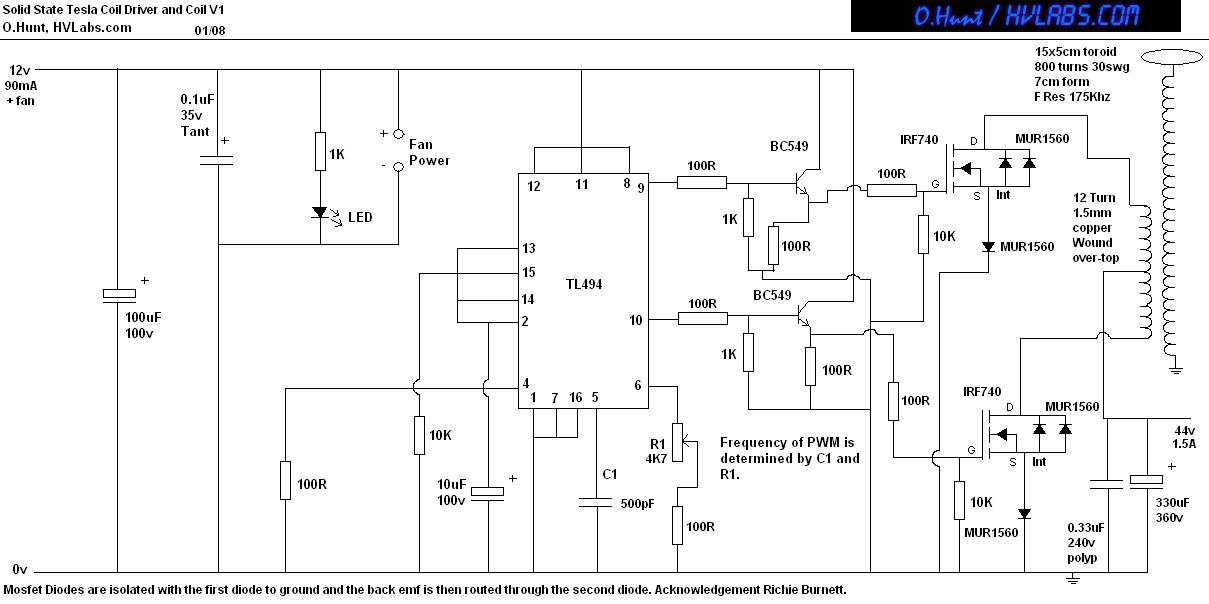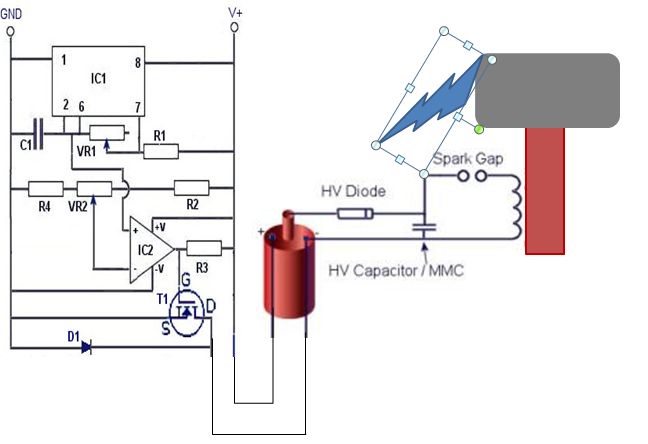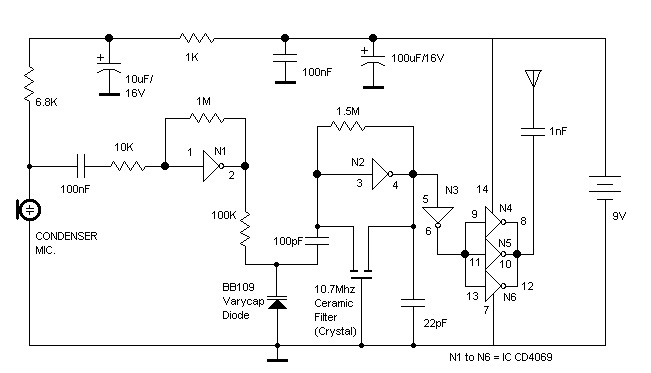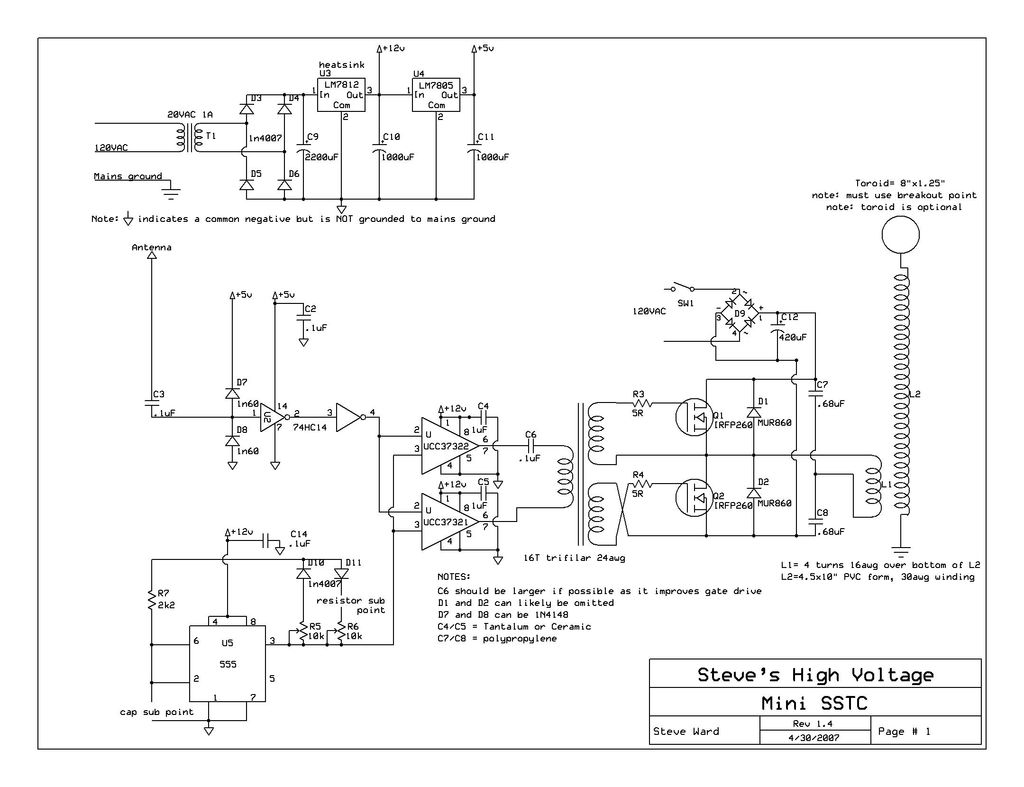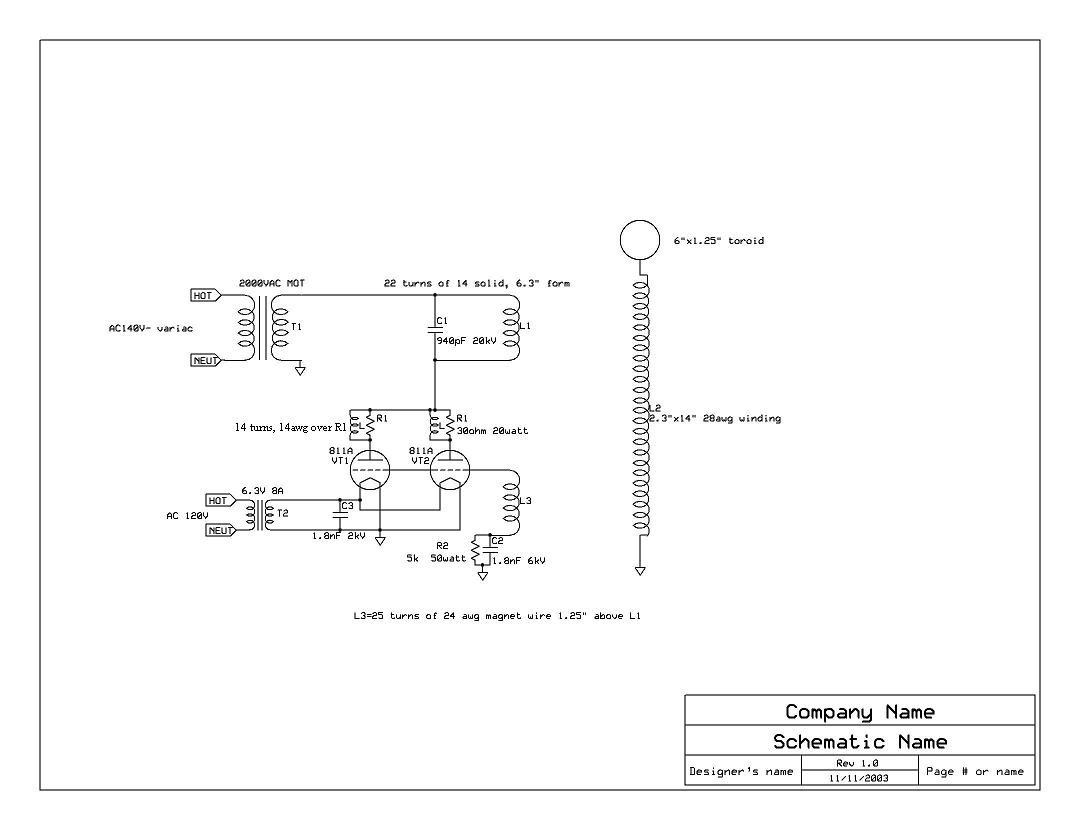
Tesla Coil
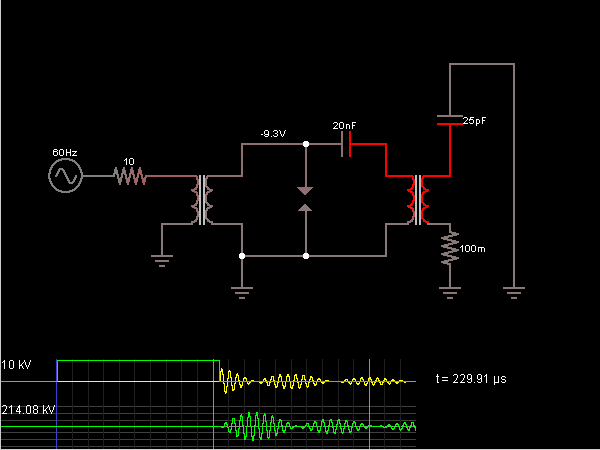
This is the Tesla Coil circuit diagram with a detailed explanation of its working principles. The electronic circuit simulator aids in designing the Tesla Coil circuit and simulating it online for better understanding.
The Tesla Coil is a resonant transformer circuit designed to produce high-voltage, low-current, high-frequency alternating current electricity. The fundamental components of a Tesla Coil include a primary coil, a secondary coil, a spark gap, and a power supply.
The primary coil is typically made of a few turns of heavy gauge wire and is connected to a high-voltage power supply. The secondary coil, which has many more turns of finer wire, is positioned above the primary coil and is often wound on a cylindrical form. The spark gap serves as a switch that allows the current to oscillate between the primary and secondary coils.
When the power supply is activated, a high voltage is applied across the primary coil, creating a magnetic field. Once the voltage reaches a certain threshold, the spark gap ionizes, allowing current to flow through the primary coil. This current generates a magnetic field that induces a voltage in the secondary coil through electromagnetic induction. The resonant frequency of the circuit is crucial, as it determines the efficiency of energy transfer between the primary and secondary coils.
The output from the secondary coil can reach several hundred thousand volts, producing impressive electrical discharges. This output is typically demonstrated through arcs or sparks that can jump several inches into the air. Tesla Coils are often used for educational demonstrations, art installations, and in some cases, radio transmission experiments.
The electronic circuit simulator enables users to visualize and manipulate the circuit components, providing a valuable tool for understanding the behavior of the Tesla Coil. By adjusting parameters such as the number of turns in the coils, the capacitance of the capacitor in the primary circuit, and the distance of the spark gap, users can observe how these changes affect the performance of the Tesla Coil. This interactive approach enhances comprehension of the underlying principles of electromagnetism and resonance in high-voltage applications.This is the Tesla Coil circuit diagram with the detailed explanation of its working principles. The electronic circuit simulator helps you to design the Tesla Coil circuit and to simulate it online for better understanding 🔗 External reference
The Tesla Coil is a resonant transformer circuit designed to produce high-voltage, low-current, high-frequency alternating current electricity. The fundamental components of a Tesla Coil include a primary coil, a secondary coil, a spark gap, and a power supply.
The primary coil is typically made of a few turns of heavy gauge wire and is connected to a high-voltage power supply. The secondary coil, which has many more turns of finer wire, is positioned above the primary coil and is often wound on a cylindrical form. The spark gap serves as a switch that allows the current to oscillate between the primary and secondary coils.
When the power supply is activated, a high voltage is applied across the primary coil, creating a magnetic field. Once the voltage reaches a certain threshold, the spark gap ionizes, allowing current to flow through the primary coil. This current generates a magnetic field that induces a voltage in the secondary coil through electromagnetic induction. The resonant frequency of the circuit is crucial, as it determines the efficiency of energy transfer between the primary and secondary coils.
The output from the secondary coil can reach several hundred thousand volts, producing impressive electrical discharges. This output is typically demonstrated through arcs or sparks that can jump several inches into the air. Tesla Coils are often used for educational demonstrations, art installations, and in some cases, radio transmission experiments.
The electronic circuit simulator enables users to visualize and manipulate the circuit components, providing a valuable tool for understanding the behavior of the Tesla Coil. By adjusting parameters such as the number of turns in the coils, the capacitance of the capacitor in the primary circuit, and the distance of the spark gap, users can observe how these changes affect the performance of the Tesla Coil. This interactive approach enhances comprehension of the underlying principles of electromagnetism and resonance in high-voltage applications.This is the Tesla Coil circuit diagram with the detailed explanation of its working principles. The electronic circuit simulator helps you to design the Tesla Coil circuit and to simulate it online for better understanding 🔗 External reference
